



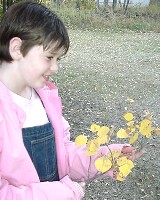 When autumn arrives, an amazing thing happens. You've probably noticed that some trees stay green, and others don't.
When autumn arrives, an amazing thing happens. You've probably noticed that some trees stay green, and others don't.Evergreen trees like pines, spruce, and fir, keep their green needles all year long. But when the cold winds come in late fall, something wonderful happens to the leaves of other trees. On deciduous trees everywhere, the leaves turn amazing shades of yellow, orange, red, and brown, and then they fall to the ground, leaving the branches bare. How does this happen, and why? Let's find out. Wherever there are deciduous trees, like poplar, maple, oak, birch, and elm, all of the leaves will lose their green colour, changing to every possible shade of yellow, orange, brown, and red. 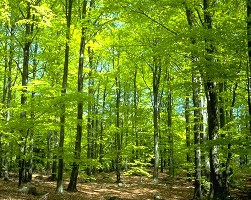 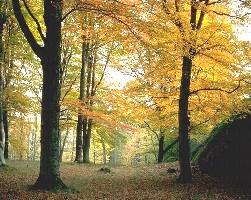 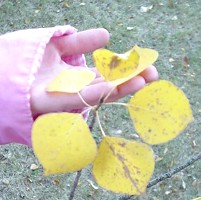 Depending on where you live, you may see all of these colours, or only a few. The most vibrant shades of red and orange-brown occur on the maple and oak trees. Depending on where you live, you may see all of these colours, or only a few. The most vibrant shades of red and orange-brown occur on the maple and oak trees.Unfortunately, there are very few of these trees in northern Alberta; our range of colours is limited to the yellow hues of the poplar tree, and a small bit of red on the occasional willow. But the change is still spectacular. Almost overnight, trees turn from green to a blaze of yellow. Let's look at how the trees accomplish this amazing transformation, and why. Green plants make their own food. Deciduous trees do this in their leaves, which contain a chemical called chlorophyll. This chemical helps the leaf turn sunlight into food, using a a process called photosynthesis, and it mixes the food with liquids brought up from the soil, and sends it to all the cells in its body. Chlorophyll is a green chemical, which is why leaves look green. In the winter, there isn't much sunlight to make food. But more importantly, any liquid travelling through the thin stems to the leaves, and any liquid in the leaves themselves, would freeze solid in the cold weather. So the leaves aren't needed during the winter months. As it starts to get cold, the tree prepares to get rid of its leaves. 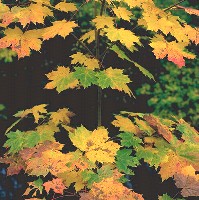 As the leaves get sealed off from the tree by these layers of cells, they can no longer get a supply of chlorophyll. Eventually all the chlorophyll in the leaves is gone. The green colour disappears. As the leaves get sealed off from the tree by these layers of cells, they can no longer get a supply of chlorophyll. Eventually all the chlorophyll in the leaves is gone. The green colour disappears.Now that the green chlorophyll is gone, you can see the true colours of the leaves, which are actually yellow, gold, and brown. New chemicals also form in some leaves as they die, adding a red, orange or sometimes purple tint. At this point, the leaves are ready to fall. The stem cells between the two layers of sealing cells are dying too, and aren't as strong as they once were ... they can no longer support the weight of the leaf. For a while, the only things still holding the leaf to the tree are the tiny veins through which the liquid used to travel. But these thin strands soon break in the breeze, and the stem snaps off at the spot just between the two layers of sealing cells. The colourful leaves fall to the ground. But soon, most of the chemicals in the leaves that made the colours also begin to disintegrate. The colours fade. Eventually all the leaves are a dull brown, the colour of tannin, which is the only chemical left in the leaves. |